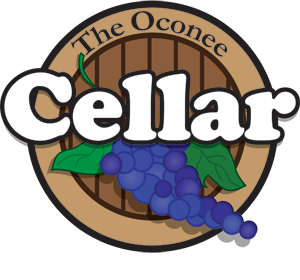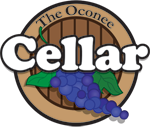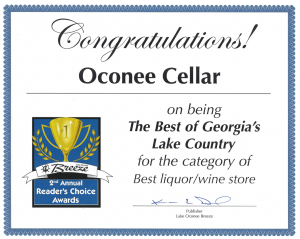April 2015 Wine Club Selections
April 2015 Wine Club Selections
We chose two wines from the Australian award winning Jacob’s Creek Winery. As an award winning Californian winemaker, Ehren Jordan’s boutique winemaking style embraces innovative techniques including late harvesting and wild yeast fermentation, offering a complexity of flavor and silky texture. Working together with Bernard Hickin, Jacob’s Creek’s Chief Winemaker and master of Australian terroir and intense varietal flavor, they have developed a range of wines that show the hallmarks of Californian craft and the rich, ripe characters of Australian wine. Two Lands captures Californian craftsmanship and Australian character, bringing together the best of both worlds.
A great article was written on this winery on The Wine Spectator’s website. Click here to follow the link to this informative article.
Jacob’s Creek Two Lands Shiraz 2013 $14.99
A full-bodied, flavorful Shiraz showing ripe red berry fruits, subtle oak and a generous prolonged finish. Ripe plum and blackberry with a hint of prune and dried fruits. Give it a try with slow cooked sticky beef short ribs.
Jacob’s Creek Two Lands Chardonnay 2014 $14.99
A vibrant, generous Chardonnay with ripe, soft melon & white peach flavors balanced with a hint of citrus & finished with subtle oak. White peach and melon varietal aromas with an attractive creamy nutty and toasty character. White peach and melon varietal aromas with an attractive creamy nutty and toasty character.
Connoisseur Club Selections
As one of Oregon’s founding wineries, their history is long and varied. From planting the first vineyard in the early 1970’s to farming 237 acres in the north Willamette Valley today, a great deal of learning, experimentation and collaboration has contributed to our company’s and our region’s success. On a beautiful June day in 1971, David Adelsheim and Ginny Adelsheim stood above an open field and were taken with the beauty of its orange and purple wildflowers. Five hundred feet below, Oregon’s north Willamette Valley stretched out in a patchwork of orchards, pasture and native trees. The field, rich with clay-loam soil, had a gentle southern exposure and was sheltered by the Chehalem Mountains. The Adelsheims had dreamed of planting a vineyard in the area since returning from a summer in Europe, where they were inspired by the artisanal foods and wines they encountered.
In 1972, the Adelsheims began planting their original 15-acre vineyard at Quarter Mile Lane with Pinot noir, Chardonnnay, Pinot gris, and Riesling, relying on family and friends for assistance. Although the Chehalem Mountains were, at this time, an unproven viticultural area, the Adelsheims were undaunted in pursuit of their dream to produce exceptional wines in Oregon’s north Willamette Valley.
Today, the Adelsheim Vineyard estate has grown to include ten exceptional vineyard sites in the Willamette Valley, totaling 223 acres. A new generation of experienced wine industry professionals has joined with David Adelsheim in our passionate endeavor to lead the industry in crafting consistently transcendent wines.
Adelsheim Pinot Noir Willamette Valley 2012 $ 29.99
92 Rating Wine Spectator
Taut, tart and surprisingly generous, blooming with juicy, cranberry-accented blackberry, cherry and spice flavors that linger easily on the sharp-edged finish. Best from 2016 through 2020. 15,221 cases made. –HS
Adelsheim Auxerrois 2013 $ 21.99
When two clones of Auxerrois (oak-sair-wah) were brought into Oregon from Alsace in 1977, they knew next to nothing about the variety. Still, after tasting some test wines made at Oregon State University, their interest was piqued. DNA testing has shown that Auxerrois, like Chardonnay, Aligoté, Gamay and 10 other varieties, is a cross between Pinot noir and an ignoble variety called Gouais blanc. Auxerrois is also the name of the area surrounding the town of Auxerre near Chablis, but the variety has disappeared from that area and all other parts of Burgundy. There are probably less than 5700 acres of it planted in the world. Its early ripening has allowed it to flourish in Luxembourg (even achieving Premier Cru status), but in Alsace, the variety is now mostly used with Pinot blanc in the production of Crémants d’Alsace. In the U.S., only two other producer make wine from this varietal.


